Red-Eared Sliders, Snapping Turtles, Red-Bellied Turtles, Soft-shelled Turtles, Reeve’s Turtles and the various Side-necks and Snake-necks are among the world’s most popular reptilian pets. While we know much about their care, the importance of calcium in the diet is, judging from the questions I receive on this blog, still not fully realized by all keepers. One feeding tip I received from an animal importer for whom I worked as a boy has served me well throughout my career as a zookeeper, and remains the simplest way to assure adequate calcium intake. Today I’ll review it and some other very useful calcium sources.
Whole Freshwater Fishes
Whole freshwater fishes such as minnows and shiners are the best, “fool-proof” source of calcium for aquatic turtles. I rely heavily on commercially available fathead minnows (a/k/a/ “rosy reds”) and golden shiners. Both are usually raised in outdoor ponds, and have therefore consumed insects and other invertebrates in addition to prepared diets. This may give them a superior nutrition profile. Depending upon the turtle species in question, I offer fish at least once weekly.
I also use minnow and fish traps to catch local species, such as various dace and sunfishes (all of which also make fascinating aquarium inhabitants…but not with turtles!). I trim spiny pectoral and dorsal fins as a precaution. I also trap mummichugs (“killies”), shiners and other marine fish on occasion (these can also be purchased in bait stores). I’ve seen no problems when using these as part of the diet, but I rely primarily on freshwater species.
Freshwater food market species such as Tilapia, trout and white perch can be used for adult Common Snapping Turtles and other large pets. You can also feed sections of large fish to smaller turtles in order to add variety to their diets, but whole fishes with bones and internal organs should be their mainstay.
Years ago, a Bronx Zoo co-worker of mine linked goldfish-dominated diets to Mata-Mata Turtle (Chelus fimbriatus) deaths in several collections. Liver and kidney damage seem to have been involved. Used sparingly, goldfishes seem are harmless, but most zoos now avoid them. Please see the article linked below.
Pre-killed pinkies (newborn, fur-less mice) are eagerly accepted by most aquatic turtles. Over-use has, however, led to kidney and liver disease in insectivorous lizards and frogs. I’ve not seen this with turtles, but have not used pinkies long term for any save several species of Australian Snake-Necks. I suggest erring on the side of caution and focusing on fish as a calcium source. I do not use furred rodents other than as a rare meal for large (“large” as in a 205 lb. Alligator Snapper and 45-60 lb. Common Snappers!) specimens.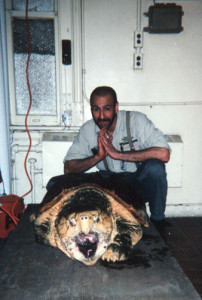
Crayfish, Earthworms and other Invertebrates
Crayfish and other crustaceans, if fed with the exoskeleton/shell intact, are especially high in calcium. Earthworms have also proven to be a good calcium source, but levels will vary with diet. Earthworm calcium content (as well as that of crickets, roaches and others) is easy to improve if you feed them properly. Please see the articles linked below, or post here for further information.
Commercial Pellets
Commercial foods from Zoo Med and other well-respected companies can provide your pets with calcium and other important nutrients, but should not be used to the exclusion of whole fishes. Some that I favor and have used, for years in some cases, include Zoo Med products such as Aquatic Turtle Food, ReptiStcks and Gourmet Diet and Reptomin Food Sticks.
Anecdotal evidence from several of my zoo colleagues indicates that shrimp (and krill) are an excellent calcium source for a variety of turtles…and I cannot recall many individuals that will refuse them! Frozen and freeze-dried shrimp and krill have long been used in tropical fish diets, and are readily available. You can also buy shrimp in food markets – “un-cleaned”, with shell intact, are the most healthful and least expensive choice. Most will be marine species, so I would not use as a basis of the diet.
Zoo Med’s Sun Dried Red Shrimp is, in my opinion, the best shrimp-option because a freshwater species (the Oriental River Shrimp, Macrobrachium nipponense) is used.
Calcium Blocks
Some turtles will feed directly on calcium blocks and cuttlebone, which also provide beak-trimming exercise. Try offering Turtle Bone or similar products.
UVB
Turtles that bask in the sun (termed “heliothermic” species) cannot use the calcium that we provide in their diets unless they have access to UVB light of the proper wavelength. This is because they must manufacture Vitamin D3 in the skin – dietary sources of D3 are not sufficient for these species. There are some exceptions, perhaps, but if denied UVB, especially when young, most will suffer severe-to-fatal health problems brought on by a calcium deficiency. Fortunately, we now have a huge array of UVB-emitting bulbs at our disposal.
Highly-aquatic species such as Common and Alligator Snappers, Pig-Nosed Turtles, Matas-Matas and Softshells usually do fine without UVB if provided a proper diet. However, as several of these bask at the surface in the wild, or occasionally on land, a UVB source would be useful as “insurance”. Please see the article linked below and post here if you need specific information on UVB sources.
Further Reading
Goldfish as a Food Source for Turtles
Slider, Map and Painted Turtle Care
UVB Bulbs: Insights from Herpetologists
 That Reptile Blog – Reptile, Amphibian and Exotic Pet Care and Information
That Reptile Blog – Reptile, Amphibian and Exotic Pet Care and Information


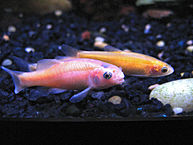

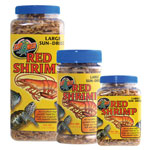
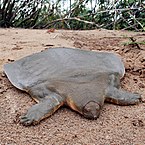

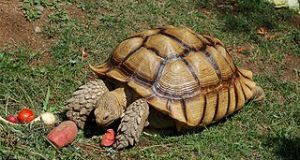
URGENT PLEASE READ I HOPE PEOPLE STILL REPLY
Hi I have a red eared slider and I live in Asia in a place where herp vets aren’t very common. My turtle’s about 5 years old and his (I think he’s male) scutes have been appearing to come off for over 6 months now. The shedding had started everywhere all at once but then never completed.
Some scutes came off and I forced 2 others off when I was scared as a mistake. But many appear to need to come off.
Also, under the ones that came off the shell appeared to be healthy but only a few days later air bubbles appeared to form like how is he ready to shed that layer already? I read that excessive shedding could be fungal is this what’s wrong?
Who do I ask for help I’m really scared about whether it is excessive shedding or improper/slow shedding. Should I feed him more vitamin E, more basking, do a fungal treatment, what?
Hello,
They do normally shed scutes (shell scales), and it may happen all at once, a bit at a time, or barely at all, and not all scurtes are shed. A different process than in snakes etc, and many factors seem to effect the process. Do not remove by hand, but if there is no sign of illness, no visible fungus the turtle is likely fine. Be sure it can dry off completely and gets plenty of UVB exposure via bulb or unfiltered sunlight. Some fish meds, i.e. methylene blue, work for turtle fungi, but no need to treat w/o more evidence of illness. best frank
Also in the area between his middle shell and hind legs, the skin there sticks out like flops out. It has been like this for about 2 months. I’ve tried to feel there but he gets very annoyed/disturbed. It feels weirder than usual, is it possible that he’s a girl holding eggs in, constipated or something? His pooping has been fine, we feed him pellets and occasionally veggies.
Hope you reply soon,
Thanks.
Hello,
Sexes are easy to distinguish…check photos online, males smaller, with very long front claws, etc. Eggs hard to feel w/o much experience. Gravid females generally become very restless, trying to escape continually and may go off feed. Diet should include small whole fishes as a calcium source. Please see this article and let me know if you need more info, best frank.